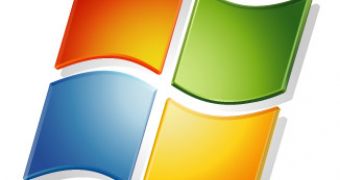Microsoft is preparing Windows 7 to boldly go... where previous editions of Windows have gone before, especially Vista. And in this context, the Redmond giant will perpetuate a model that has been criticized, namely continuing to support legacy software and hardware products with the next iteration of the Windows client. While the company's non-Windows operating systems such as Singularity and Midori are seen as a necessary divorce from the baggage gathered by Windows dating back to the past century, such a move is nowhere near the immediate horizon. As far as Windows 7 is concerned, Microsoft has already started flirting with all the members of the PC ecosystem to ensure that the next major version of the Windows client does not break away from tradition.
"Windows is about being a great component of the ecosystem and what we are endeavoring to do with Windows 7 is to make sure we do a great job on the ecosystem aspects of building Windows 7," revealed Steven Sinofsky, senior vice president, Windows and Windows Live Engineering Group, indicating that Microsoft is doing its best to accommodate hardware manufacturers, OEMs, software developers and enthusiast with Windows 7.
"Each of these parties has a key role to play in delivering on the PC experience and also in providing an environment where many people can take a PC and provide a tailored and differentiated experience, and where companies can profit by providing unique and differentiated products and services (and choice to consumers). For Windows 7 our goals have been to be clearer in our plans and stronger in our execution such that each can make the most of these opportunities building on Windows," Sinofsky stated.
Having learned from the mistakes made with Windows Vista, the Redmond giant has focused from the get go on the critical members of the Windows ecosystem. The fact of the matter is that Windows Vista suffered from Microsoft's Evangelism efforts failing to get the ecosystem to deliver tailored solutions in time.
"For Windows 7 we have been working with OEMs very closely since the earliest days of the project to develop a much more shared view of how to deliver a great experience to customers. Together we have been sharing views on ways to provide differentiated PC experiences, customer feedback on pre-loaded software, and partnering on the end-to-end measurement of the performance of new PCs on key metrics such as boot and shutdown," Sinofsky added.
The goal with Windows 7 is for a clean installation of the operating system to work by default. Microsoft does in fact plan the evolution of the Plug-and-Play infrastructure of the client in order for the necessary drivers to be delivered via Windows Update seamlessly. In this regard, Sinofsky emphasized the need for Windows 7 to integrate without any issues with the ecosystem of devices and hardware products orbiting around it.
"The device driver model is the core technology that Microsoft delivers in Windows to enable this work. For Windows 7 we have committed to further stabilization of the driver model and to pull forward the work done for Windows Vista so it seamlessly applies to Windows 7. Drivers are a place where IHVs express their differentiated experience so the breadth of choice and opportunity is super important," Sinofsky explained.
But at the same time, Microsoft is also focusing on satisfying software developers and enthusiasts with Windows 7. The next iteration of the Windows client will deliver new application programming interfaces, fresh system services and a new GUI framework, but it will also contribute to pushing the ecosystem towards 64-bit, while at the same time remaining anchored in the past, and ensuring that everything that works with Windows Vista will also work with Windows 7.

 14 DAY TRIAL //
14 DAY TRIAL //